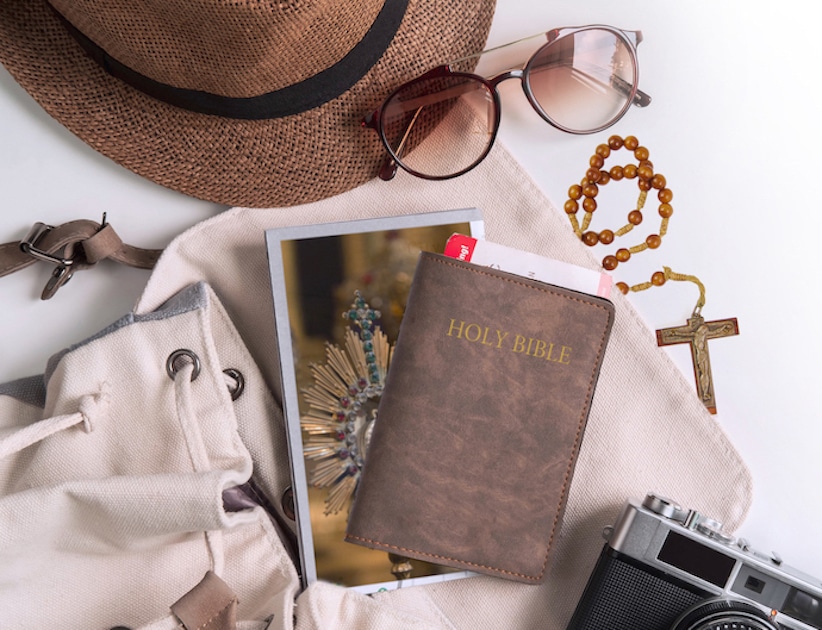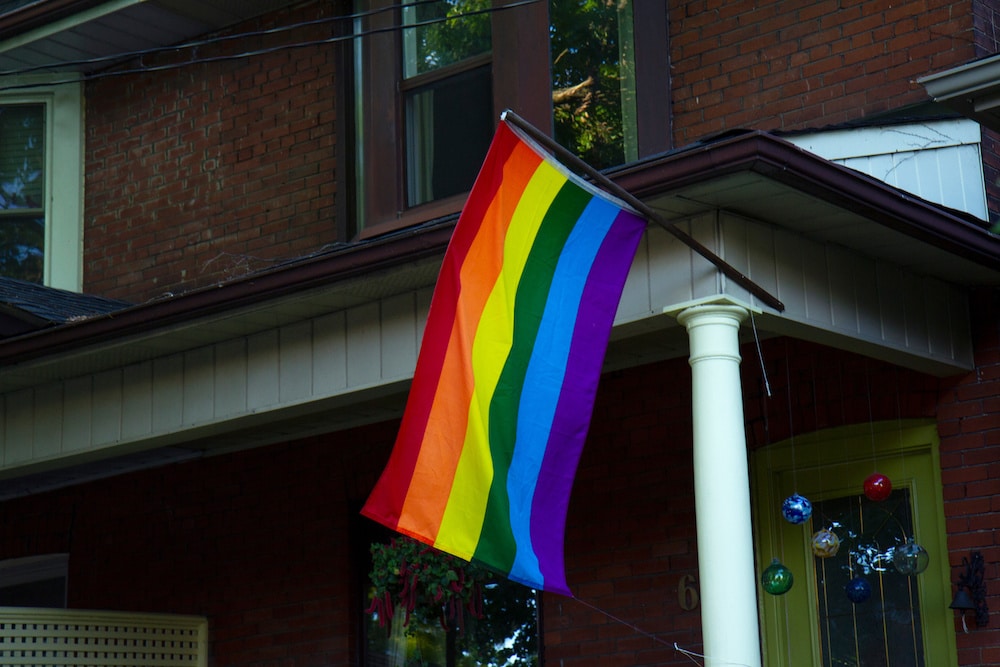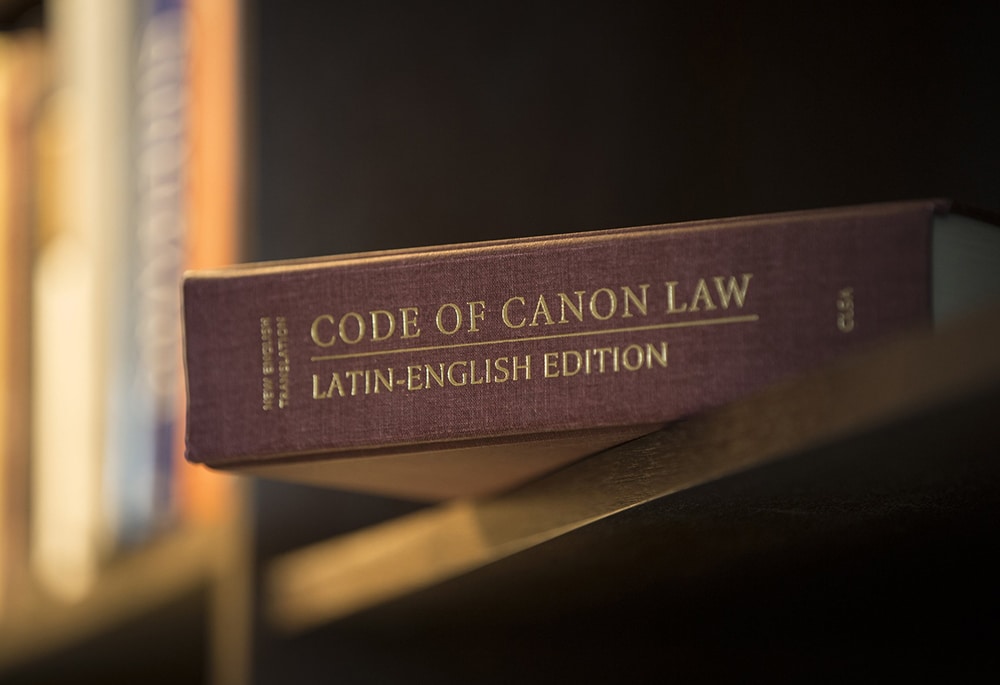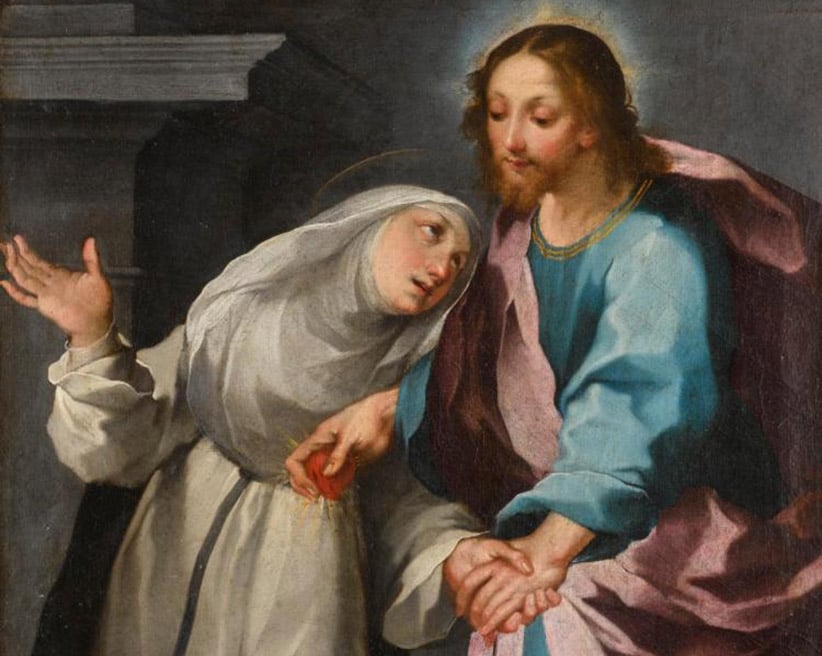Every Catholic church houses God present in the Eucharist. At the same time, many of them also hold relics or remains of the saints — holy men and women now in heaven after dedicating their lives to God. Some churches in the United States have hundreds, even thousands, of relics.
Custodians of relics nationwide spoke with Our Sunday Visitor, including four people who each care for more than 1,000 relics. They expressed a particular hope for their visitors: that Catholics realize the saints were real, normal people; that every person is called to be a saint; and that he or she is not alone because the saints — as their friends — are cheering them on from heaven.
Today, Catholics are invited to meet saints in a special way by venerating their relics.
| Three classes of relics |
|---|
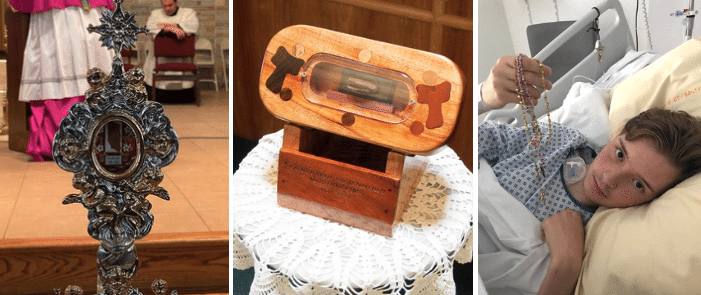
First-class Second-class Third-class |
“To venerate relics is to encounter the very personal presence of the holy men and women who have gone before,” Timothy O’Malley, director of education for the McGrath Institute for Church Life and academic director of the Notre Dame Center for Liturgy, told Our Sunday Visitor.
“Christians are weird, and part of that weirdness is the recognition that the body is part of our salvation,” O’Malley said, acknowledging those who may find the practice morbid. “Salvation is not just some sort of intellectual insight. It’s the flesh and blood, history and presence of that saint in the world.”
In other words, his or her relics.
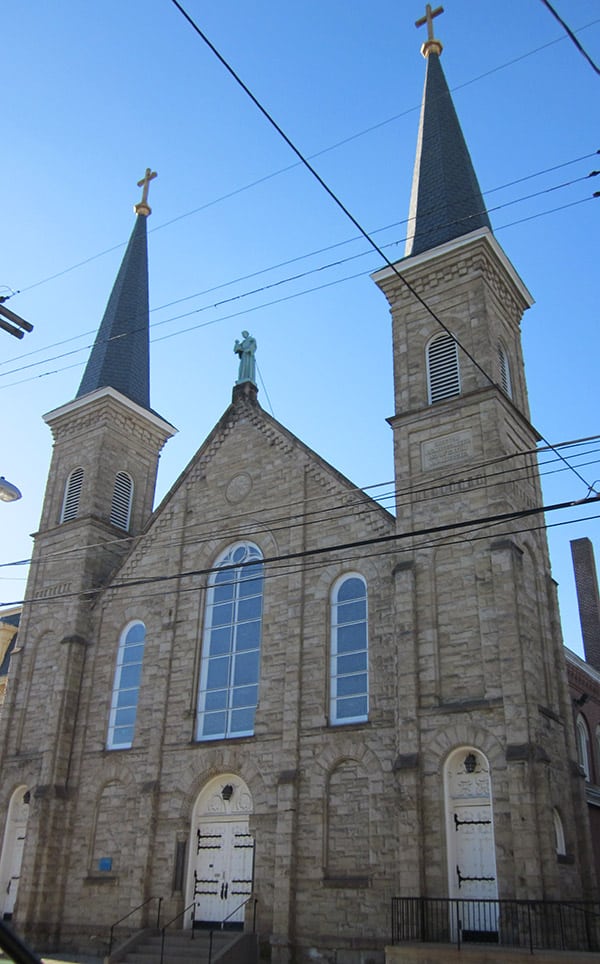
St. Anthony Chapel
Pittsburgh
When Carole Brueckner, the chairperson and docent of St. Anthony Chapel, leads tours through her church in Pittsburgh, she always tells visitors that being there is like stepping into heaven for a little bit.
“Where else can you go, that you’re surrounded by so many relics of the saints in one area?” she wanted to know.
With more than 5,000 relics, St. Anthony Chapel houses the largest collection of Christian relics in the world outside of the Vatican. The relics include those of the saints as well as particles of Christ’s cross and a thorn from his crown of thorns.
Brueckner described some of the more popular relics as the relics of Our Lord, the Blessed Virgin Mary (her veil), St. Joseph, the apostles, and St. Anthony of Padua. One relic she wanted more people to know about is a relic of St. Anthony. The chapel houses the only particle from his skull not in Padua, Italy: his tooth.
She described the chapel’s impact on its visitors. Many people say they feel something — like the presence of someone approaching them — after entering the chapel.
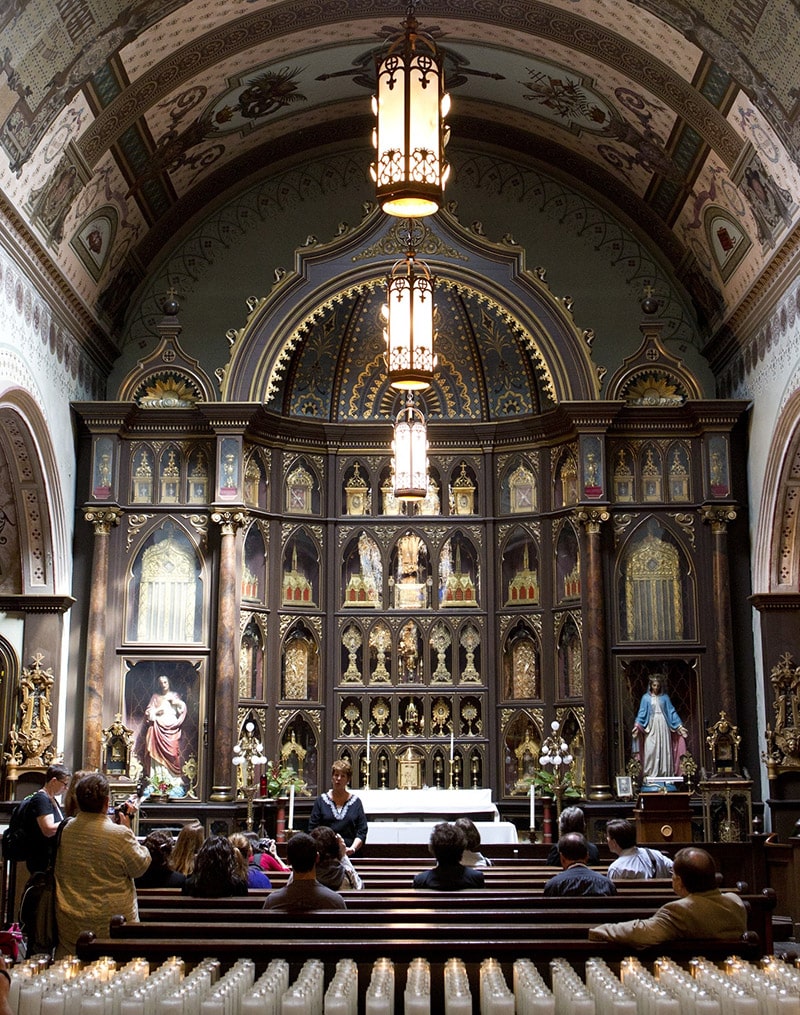
“I do believe that in today’s world, we all need that peace, and this is a great place to come,” Brueckner said. “If nothing else, just to sit there and see if someone is trying to speak to you.”
She remembered hearing countless stories of answered prayers at the chapel. She shared one case being considered by the Vatican: a pregnant woman gave birth prematurely to a healthy child after she was told that, if her baby survived delivery, he would have disabilities.
“The mother of the girl went to our pastor and … he blessed her with one of the newest relics he had just received, Blessed Frédéric Janssoone, a French Canadian priest,” Brueckner recalled. “The relic was given to her and the girl actually touched it to her abdomen.”
The girl’s baby boy was born shortly after, weighing only a little more than one pound, Brueckner said. He was perfectly normal.
“These are normal people like you and I who have chosen to follow Our Lord, and many of them gave up their lives by being martyred for their faith. I think that’s something that we as Catholics need to get back to and realize we can become one of them also.”
— Carole Brueckner
After delivery, the girl asked her mother, “Who was the man holding my hand during delivery?” Brueckner added. When her mother said no one was there, the girl described Blessed Frédéric Janssoone.
Today, Brueckner said, the premature baby boy is a healthy, athletic teenager.
Brueckner called caring for the relics a privilege. She hoped that, after visiting them, Catholics would come away with a deeper devotion to and reverence for the saints.
“These are normal people like you and I who have chosen to follow Our Lord, and many of them gave up their lives by being martyred for their faith,” she said. “I think that’s something that we as Catholics need to get back to and realize we can become one of them also.”
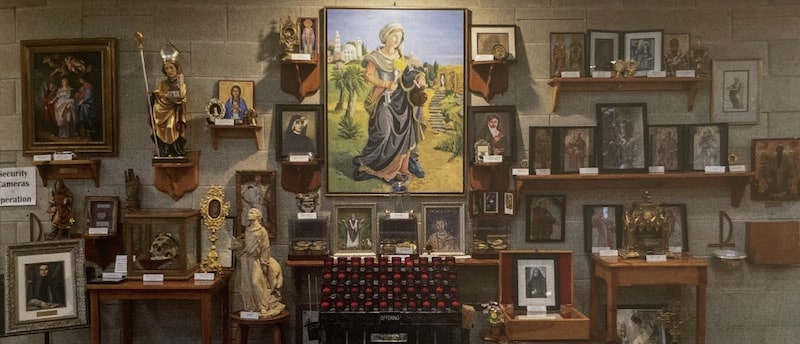
Shrine of All Saints at St. Martha of Bethany Church
Morton Grove, Illinois
The Shrine of All Saints at the St. Martha of Bethany campus of All Saints Parish houses the second largest collection of relics after St. Anthony Chapel, according to the rector, Father Dennis O’Neill.
Located in Morton Grove, Illinois, the shrine cares for the relics of more than 3,000 saints. Many of them are listed online.
Father O’Neill described one relic that stands out: a lock of St. Thérèse of Lisieux’s hair, which continuously exudes the scent of roses.
“The collection provides a great experience of immersion in the mystery of the Communion of Saints.”
— Father Dennis O’Neill
The shrine also holds several complete, or nearly complete, bones of saints, including the right ulna and a carpal bone from the arm of St. Mark the Evangelist, the left fibula of St. Peter, and a humerus of St. Thomas the Apostle and of St. Benedict of Nursia.
Visitors can also see an arm bone of St. Francis of Assisi, two bones of the first martyr, St. Stephen, Blessed Margaret Plantagenet Pole’s jawbone and 11 teeth, St. Remaclus’ skull, a portion of St. Lucy’s cranium, St. Sabas the Great’s cranium, St. Fructuosus of Tarragona’s cranium, part of St. Nicholas’ pelvis, St. Vincent the Deacon’s hip socket, and the relics of Sts. Colette of Corbie and John Francis Regis, which were hidden during the French Revolution.
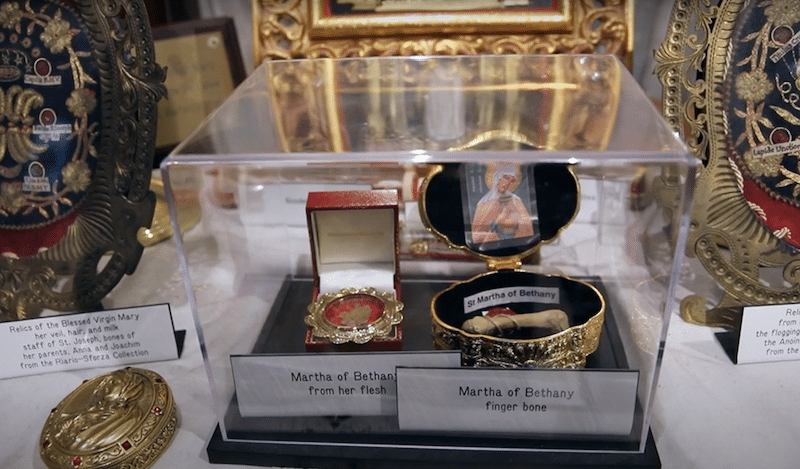
The shrine holds saints’ belongings, including St. John Vianney’s summer breviary cover, chalice bag and home visitation bell. It also has a chalice used by St. Padre Pio and part of the wedding dress worn by St. Teresa Benedicta of the Cross (Edith Stein) the day she became a Carmelite nun.
Father O’Neill shared two miracles heard of happening through these relics: a woman cured of a brain tumor through the intercession of Blessed John Licci and a man brought out of an irreversible coma through the intercession of Blessed Margaret Plantagenet Pole.
He called it awesome to be the custodian of these relics.
“The collection provides a great experience of immersion in the mystery of the Communion of Saints,” Father O’Neill concluded. “Everyone who comes declares an intention to return because of inadequate time to explore everything here. One has to see it to believe it.”
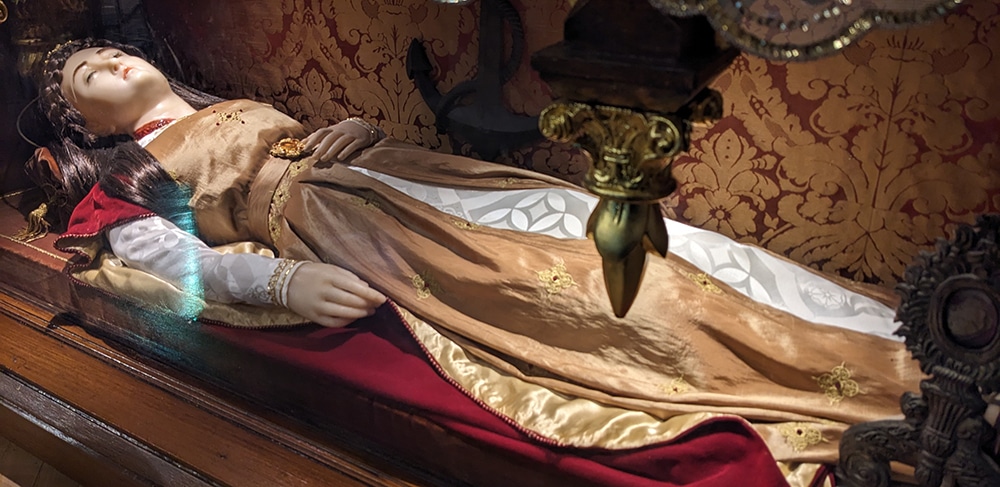
St. John Cantius Church
Chicago
Brother Joshua Smerker of the Canons Regular of St. John Cantius described the “beautiful privilege” of caring for the relics at St. John Cantius Church.
“The saints are our friends, and to care for their relics, the remains of their lives on earth, is a constant reminder of how close they remain to us and that they are urging us on in the trials of life so that we may one day join them,” he said.
The church in Chicago houses an estimated 1,800 relics, including two reliquaries that each contain upwards of 450 saints.
Brother Smerker described the rarest relics in the collection as those of Christ’s passion. One reliquary contains a thorn from the crown of thorns, a fragment of the pillar of scourging, a fragment of the inscription above the cross, and a fragment of the reed held by Christ.
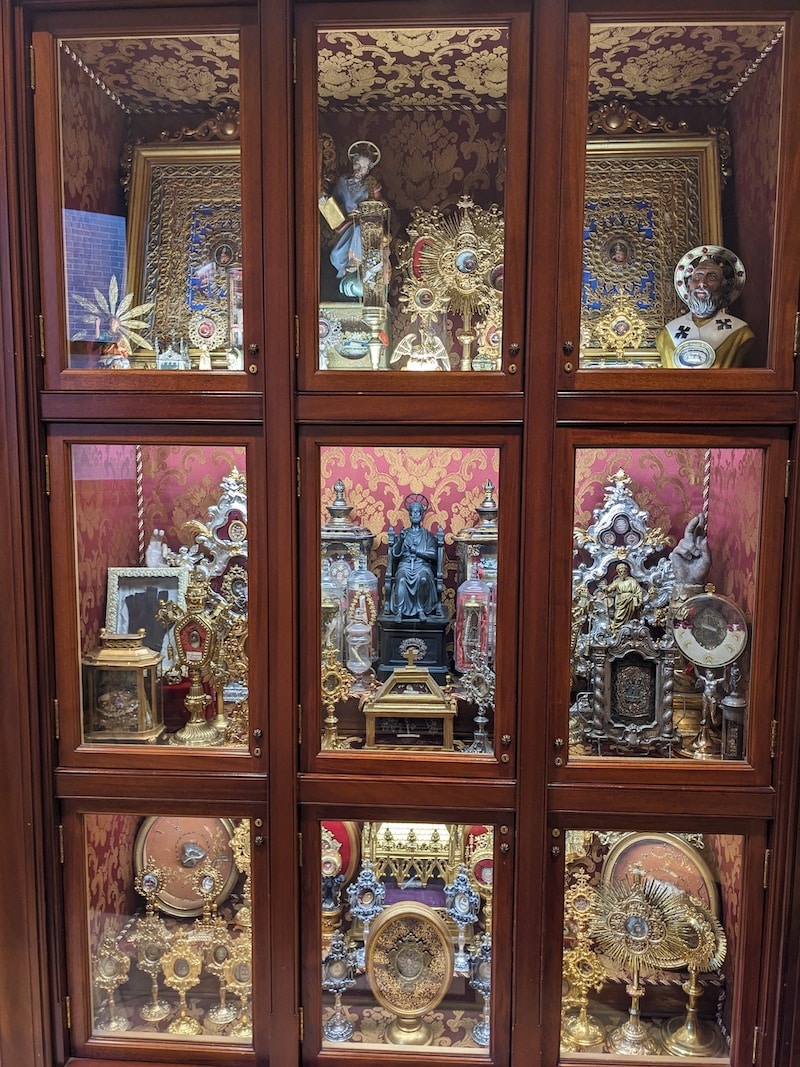
“This reliquary is believed to be one of three commissioned by King Louis the IX of France, who also built Sainte-Chapelle within Notre-Dame de Paris to house the Passion relics after he came into possession of the crown of thorns,” Brother Smerker said.
The church also houses the largest relic of its patron saint outside of Poland: the tibia bone of St. John Cantius. Other relics include those of St. Faustina and St. John Vianney, along with St. Padre Pio’s glove and a piece of cloth that covered his side wound.
Brother Smerker revealed that younger visitors are especially drawn to the life-size wax simulacrums of St. Philomena and St. Lucy, with relics of each saint next to them.
He also described a relic that he wanted more people to know about: a piece of the tongue of St. John Nepomuk, a well-venerated saint in the German Church.
He told the story about the priest confessor of the Queen of Bohemia. When her husband, King Wenceslaus IV of Bohemia, thought that his wife was having an affair, he asked the saint about her confession. St. John Nepomuk refused to break the seal of confession, and was tortured before being thrown into the Vltava river.
“[I hope] that they come away with the sense that the saints are not far from us at all and to show that we all have something to offer with our strengths and weaknesses.”
— Brother Joshua Smerker
Brother Smerker identified him as the first martyr of the confessional.
“This was in the wake of the Protestant reformation and gave many the realization of how sacred that seal of confession is,” he stressed. “This is especially important for us in these days where in many places around the world there is talk of secular authorities forcing priests to reveal criminal information learned in the confessional.”
He hoped that Catholic visitors walked away with a new closeness to the saints.
“[I hope] that they come away with the sense that the saints are not far from us at all and to show that we all have something to offer with our strengths and weaknesses,” he said. “Just as St. Paul says to the Corinthians, ‘But God chose what is foolish in the world to shame the wise; God chose what is weak in the world to shame the strong,’ we were made for heaven … and the relics remind us that it is much closer than we think.”
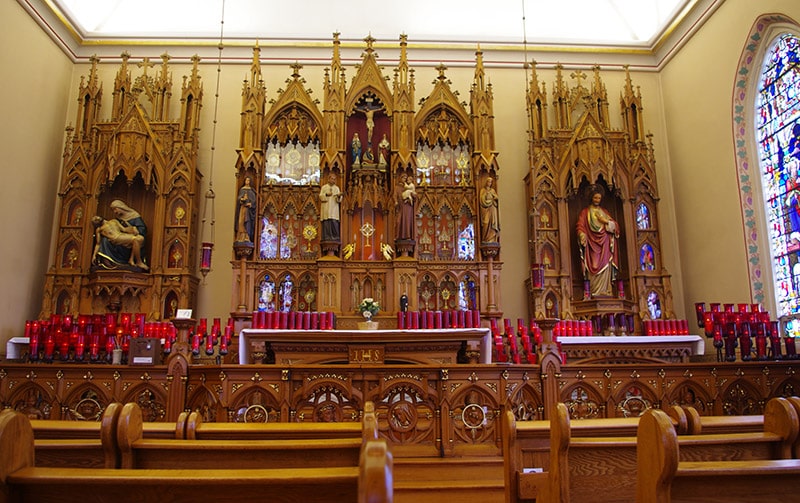
The Maria Stein Shrine of the Holy Relics
Maria Stein, Ohio
Matt Hess, the director of ministry and hospitality at the Maria Stein Shrine of the Holy Relics, hopes that visitors leave the shrine feeling called to be saints.
“I hope that they realize that these saints were real people like them, that they had hopes and dreams and failures and redemption — and all of the things that we experience, that we go through, there’s probably a saint for it,” he said.
“They’re not just these gilded statues or these stained-glass windows,” he added. “These are real people that made it, that followed Christ.”
The shrine in Maria Stein, Ohio, houses more than 1,200 relics of the saints and Our Lord. The relics of Christ include his crib, tunic, cross, burial cloth, pieces of the tables at Cana and the Last Supper, and St. Veronica’s veil. Visitors can view a directory listing the relics on the shrine’s website.
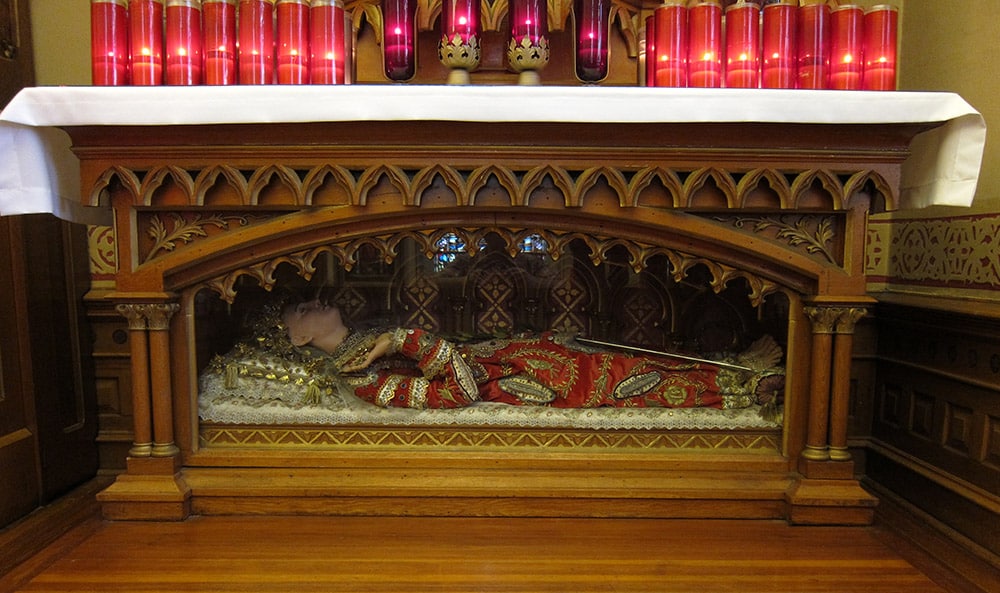
In November, the shrine is planning to add a dozen or so more relics to its collection, Hess said. Those will include relics of St. Josephine Bakhita, St. Paul VI, Sts. Louis and Zélie Martin, St. Teresa Benedicta of the Cross (Edith Stein), and Blessed James Miller, an American brother martyred in Guatemala.
The shrine’s most unique relics may be those of St. Victoria, a martyr of the early Church, located in the base of the Sacred Heart altar in the relic chapel.
“St. Victoria is this popular because of the way that the reliquary is laid out,” Hess said, describing the grand reliquary made for her in the 1800s.
The Sisters of the Precious Blood who cared for the relics, he said, made a kind of effigy or depiction of St. Victoria out of wax — with a head, hands and feet — and sewed the saint’s bones into the dress that she wears.
“They’re not just these gilded statues or these stained-glass windows. These are real people that made it, that followed Christ.”
— Matt Hess
“Victoria was probably about the age of 14 when she was martyred during one of the persecutions in Rome,” Hess described. “The young sisters were very drawn to her … because they’re entering the convent about the age that she was when she was martyred.”
Hess also pointed to two relics of the true cross on permanent display, a silver reliquary with the relics of 16 New Testament figures, and, his favorite, the hair of St. John Paul II. Next to that, he added, sits the hair of St. Teresa of Calcutta.
He recalled the impact of the relics on visitors, especially during their prayer services held three times a year with the relic of St. Peregrine, the patron saint of those battling cancer.
He called it a blessing to care for the relics.
“To me, it’s just been a great witness to the faith of these folks and a great witness to the faith that we’ve inherited here,” he said.
| Notable U.S. relics |
|---|
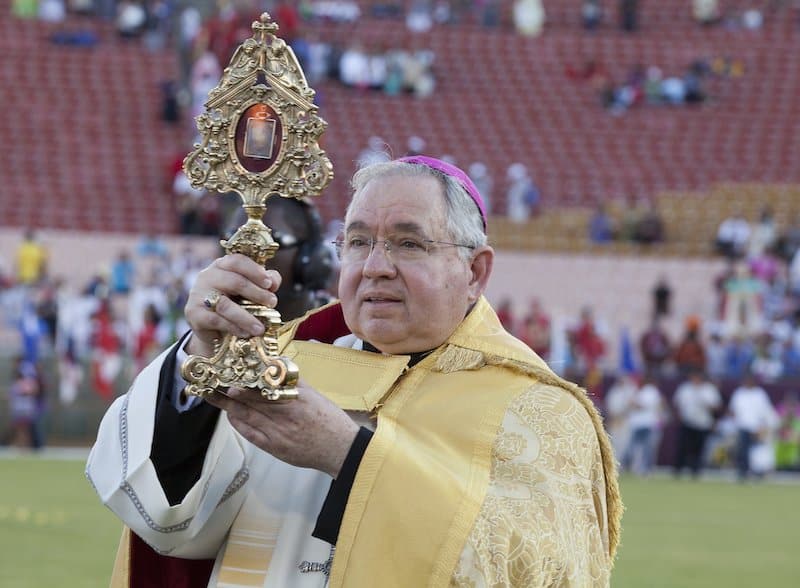 While they may not have thousands of relics, several U.S. churches nationwide care for relics that are particularly unique.
|
The importance of the body
Catholic commentators addressed the significance of venerating or honoring relics today.
“Your whole life happens in your body, and it’s our belief that our bodies, because they’re joined to Christ through baptism and the reception of the sacraments … will rise again. It is a testimony to that belief,” Father Hugh Vincent Dyer, O.P., an associate chaplain at Catholic University of America told Our Sunday Visitor. “It’s also a testimony to the fact that we are saved together as members of Christ’s mystical body.”
O’Malley also stressed the importance of the body.
“It’s pretty clear that in the earliest of the early Church, that sort of parts of martyrs’ bodies were kept and they represented something like the real or true presence of that saint in the midst of the assembly,” O’Malley said.
| Other churches for visiting the saints |
|---|
 Several churches in the United States house hundreds to thousands of relics:
|
“If you think theologically, it all kind of makes sense, doesn’t it?” he asked. “The body matters. The body is the space of salvation, and yet here you have the most saved of all bodies.”
O’Malley warned that relics can be easily abused, beginning with treating them like famous souvenirs. Relics themselves, he also cautioned, are not worshiped. They are venerated.
“There’s an honoring of them as those who represent this holiness,” he said. “And when we address prayer toward them, it’s to the God who made them holy — and that they would intervene for us, the poor men and women who follow in holiness behind them.”
Katie Yoder is a contributing editor for Our Sunday Visitor.

